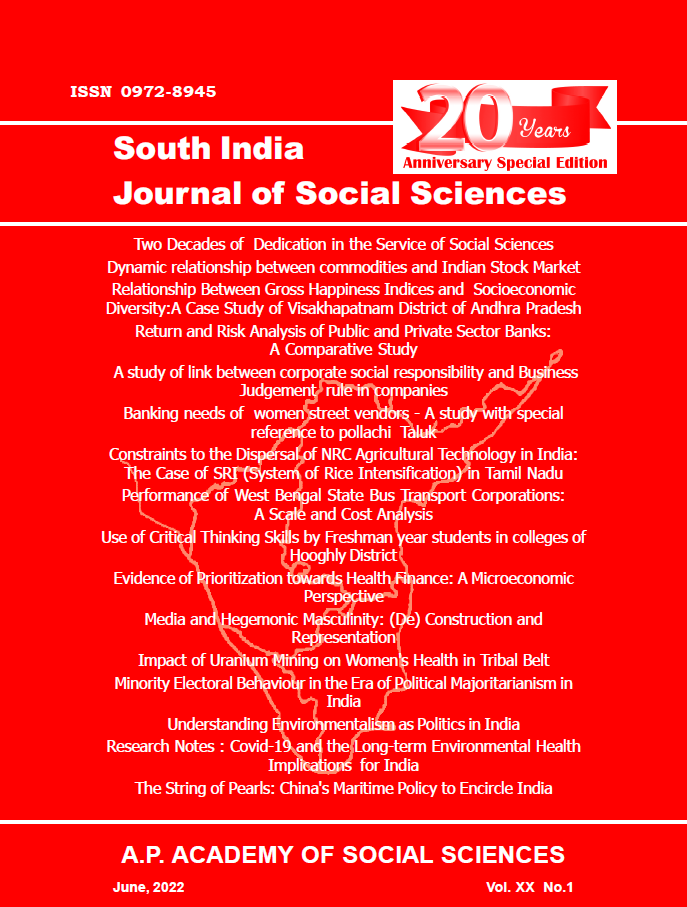Abstract
Modern civilization enables men to prepare themselves actively and construct their masculinities within explicit social and historical settings. Diverse cultures determine what it means to be a man about "the others," such as racial minorities, sexual minorities, or women. On the other hand, each culture has a predominant paradigm, "hegemonic," while distinct characters are subordinated. Therefore "gender is invariably relational, and designs of masculinity are socially determined in contradistinction from some designs (whether actual or hypothetical) of femininity''. Masculine domination can be seen through performance, status, outlook, representation, sexuality, profession, or behavior and should be examined in three proportions: local, regional, and global.
References
Beasley, C., 2008. Rethinking Hegemonic Masculinity in a Globalizing World. Men and Masculinities, 11(1), pp.86-103.
Brod, H. ed., 1987.The Making of Masculinities: The New Men's Studies. Boston: Allen &Unwin.
Chafetz, J. (1997). Feminist theory and sociology: Underutilized contributions for mainstream theory. Annual Review of Sociology, 23, 97-120.
Clarkson, J. (2005). Contesting masculinity's makeover: Queer eye, consumer masculinity, and"straight-acting" gays.Journal of Communication Inquiry, 29(3), 235-255.
Connell, R. W. and Messerschmidt, J. W., 2005. Hegemonic Masculinity: Rethinking the Concept. Gender & society,19(6), pp.829-859.
Connell, R.W. 1995. Masculinities. Cambridge, UK: Polity Press.
Gamson, Joshua. 2016. "Popular Culture Constructs Sexuality." Introducing the New Sexuality Series. Routledge.
Gimenez, M., & Vogel, L. (2005). Marxist-feminist thought today. Science and Society, 69(1),11-32.
Gray, J. J. and Ginsberg, R. L., 2007.Muscle Dissatisfaction: An Overview of Psychological and Cultural Research and Theory. In: J. K. Thompson and G. Cafri, eds. 2007. The Muscular Ideal: Psychological, Social, and Medical Perspectives. Washington, DC: American Psychological Association. pp.15-39.
Griffin, E. (2011). A first look at communication theory. (8th ed.). Wheaton, IL: McGraw-Hill.
Hanke, R., 1998. Theorizing Masculinity With/In the Media. Communication Theory, 8(2), pp.183-201.
Hardin, M., Kuehn, K. M., Jones, H., Genovese, J.,&Balaji, M. (2009). 'Have You Got Game? 'Hegemonic Masculinity and Neo-Homophobia inU.S. Newspaper Sports Columns. Communication, Culture & Critique, 2(2), 182-200.
Harrison, Claire. 2008. "Real men do wear mascara: advertising discourse and masculineidentity." Critical Discourse Studies 5(1):55-74.
Hatfield, E. (2010). 'What it means to be a man': Examining hegemonic masculinity in Two and a Half Men. Communication, Culture & Critique, 3(4), 526-548.
Katz, J., 2011. Advertising and the Construction of Violent White Masculinity: From BMWs to Bud Light. In: G. Dines andJ. M. Humez, eds. 2011. Gender, Race and Class in Media. Thousand Oaks: Sage Publications.
Khunou, G. (2013). Men's health: An analysis of representations of men's health in the Sowetannewspaper. Communication: South African Journal for Communication
Theory & Research, 39(2), 182-193.
Shoemaker, P., & Reese, S. (1996). Mediating the message: Theories of influences on mass media content (2nd Ed.). New York: Longman Publishers USA.
Spitulnik, D. (1993). Anthropology and the mass media. Annual Reviews Anthropology, 22, 293-315.
South India Journal of Social Sciences, Vol. XX No. 1 131
Tan, Y., P. Shaw, H. Cheng, et. al. 2013. "The Construction of Masculinity: A Cross-Cultural Analysis of Men's Lifestyle Magazine Advertisements." Sex Roles 69(5):237- 249.
Trujillo, N., 1991. Hegemonic Masculinity on the Mound: Media Representations of Nolan Ryan and American Sports Culture. Critical Studies in Mass Communication, 8, pp.290-308.

This work is licensed under a Creative Commons Attribution-NonCommercial-NoDerivatives 4.0 International License.
Copyright (c) 2022 SOUTH INDIA JOURNAL OF SOCIAL SCIENCES

